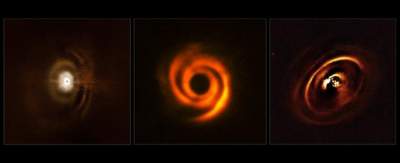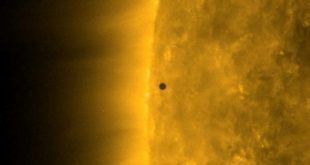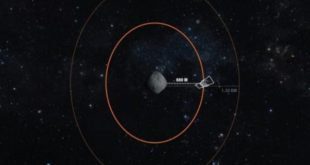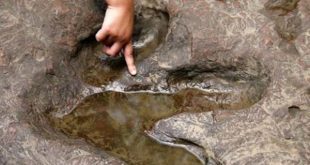 Received a rare “baby pictures” of planetary systems.
Received a rare “baby pictures” of planetary systems.
Three groups of astronomers were able to observe the processes that occur in protoplanetary disks around stars, which allowed them to see how newborn planets influence the form of a disk, in which appear, and get an idea about the structure of the environment in which new worlds are formed.
On the findings of researchers according to the European southern Observatory.
One of the detected disks is located at a distance of 600 light years from Earth in the constellation Scorpius. Researchers have documented a complex system of surrounding concentric rings, as if a giant copy of the rings of Saturn. Such rings in the protoplanetary disk is still observed very rarely. This disk was formed only about 1.8 million years ago and there are visible signs of the existence of the planets in process of formation.
The age of the discovered disk makes the system RXJ1615 out of the ordinary – most of the protoplanetary disks is known to date, relatively old and proanalizirovana.
Another protoplanetary disk was discovered at a distance of 500 light years from Earth in the constellation of the Chameleon. Image analysis also revealed a star has a protoplanetary disk with concentric rings. The symmetry of both systems – one more unexpected fact: in most protoplanetary systems has asymmetric spiral arms, turbulence, and void.
The researchers also failed to register in the protoplanetary disk at a distance of 450 light-years from Earth interesting new items, including free matter area in the center and two bright spiral arms, which, in all probability, established one or several massive protoplanetary. Someday they will be gas giants similar to Jupiter.
In addition, in the disk around HD135344B observed four dark bands, which, apparently, are a shadow picture of the motion of matter within the disk. When one of the bands noticeably changes its appearance in the few months that passed between observation sets. This is a rare example of observation of the evolution of protoplanets in real time.








